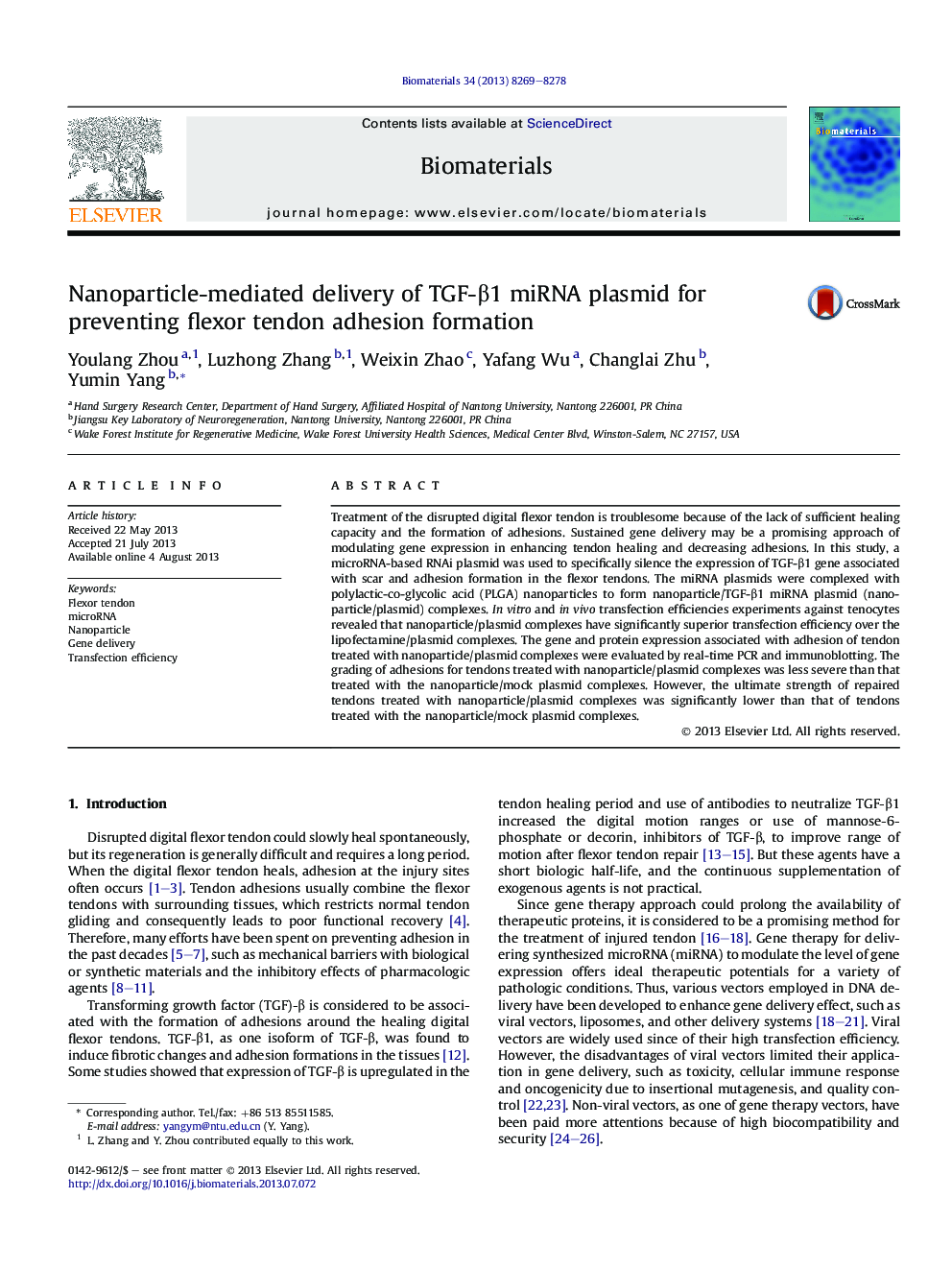| Article ID | Journal | Published Year | Pages | File Type |
|---|---|---|---|---|
| 10228508 | Biomaterials | 2013 | 10 Pages |
Abstract
Treatment of the disrupted digital flexor tendon is troublesome because of the lack of sufficient healing capacity and the formation of adhesions. Sustained gene delivery may be a promising approach of modulating gene expression in enhancing tendon healing and decreasing adhesions. In this study, a microRNA-based RNAi plasmid was used to specifically silence the expression of TGF-β1 gene associated with scar and adhesion formation in the flexor tendons. The miRNA plasmids were complexed with polylactic-co-glycolic acid (PLGA) nanoparticles to form nanoparticle/TGF-β1 miRNA plasmid (nanoparticle/plasmid) complexes. In vitro and in vivo transfection efficiencies experiments against tenocytes revealed that nanoparticle/plasmid complexes have significantly superior transfection efficiency over the lipofectamine/plasmid complexes. The gene and protein expression associated with adhesion of tendon treated with nanoparticle/plasmid complexes were evaluated by real-time PCR and immunoblotting. The grading of adhesions for tendons treated with nanoparticle/plasmid complexes was less severe than that treated with the nanoparticle/mock plasmid complexes. However, the ultimate strength of repaired tendons treated with nanoparticle/plasmid complexes was significantly lower than that of tendons treated with the nanoparticle/mock plasmid complexes.
Related Topics
Physical Sciences and Engineering
Chemical Engineering
Bioengineering
Authors
Youlang Zhou, Luzhong Zhang, Weixin Zhao, Yafang Wu, Changlai Zhu, Yumin Yang,
